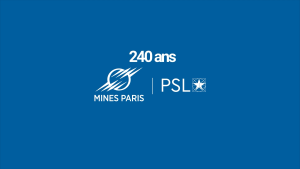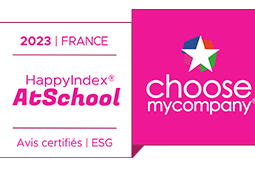



 Lecture
Lecture
Bio-based aerogels: new eco-friendly porous materials for thermal insulation and controlled release
Cold gas dynamic spray, namely cold spray, is one of the most innovative thermal spray processes. The number of industrial applications for cold spray has been growing dramatically over the past 10 years. However, some parts remain rather far from application for the process due to specific characteristics. Among them, one may mention the automotive cylinder bore for which an inner coating can be required as a substitute for a liner. A practical objective of the thesis work is to develop cold spray successfully for that from the use of an ID (inner diameter) spraying gun, which has just come out. The scientific objective is to go into basic changes in the coating build-up process due to processing in a confined medium (i.e. in the cylinder bore). The study will show the various following stages:
Electron multipacting and the electron cloud have been identified as being major limiting factors for the beam quality of high-intensity accelerators of positive particles.
Conditioning operational mitigation technics are already used and engineering surface solutions like amorphous carbon coating or surface structuration are investigated to decrease the SEY (Secondary Electron Yield) of the surfaces. Laser engineered surface structures (LESS) offer a promising alternative to treat the beam screens in situ and on atmospheric pressure.
Tests undertaken at CERN have shown that the modification of the surface morphology by creating roughness at different scales induces a decrease of the SEY by geometrical effects. Nevertheless, major characteristics of the treated surface, i.e. mechanical strength and dust generation rate have not been addressed yet.
During the thesis, a quantitative analysis of the multi-scale distribution of the surface morphology is carried out. Microstrutural analysis, scanning and transmission electron microscopies are used to investigate metallographic structures, composition and phase transformation at the surface of the laser-processed material. Three-dimensional analysis of the surface, based on results from electron nanotomography by FIB-SEM are applied to go into the topographical characterization at the nanoscale. These analysis are assisted by image processing consisting in stereological/morphological operations.
Electro-magneto thermal mechanical simulations based on a representative 3D surface model are expected to assess the solicitations during a magnet quench, a fast magnetic field decay and local damage/crack propagation leading to possible dust generation.
Accidentally discovered in 2004, carbon dots are carbon nanoparticles possessing remarkable luminescent properties including fluorescence, making them suitable for low-cost and eco-friendly light emitting devices and serious competitors to quantum dots. During the last decade, they attracted a growing interest from scientists and syntheses have been multiplied. The most widely used method is soft chemistry synthesis based on dehydration of carbohydrates that have O,H,N…elements in their structure. These elements play a key role on physicochemical and optical properties of the obtained carbon dots, especially on fluorescence which origin is still discussed. All reported syntheses are easy to implement and well mastered. However, they are all done at laboratory scale and almost never on pilot or industrial scale. In addition, the reported methods used to recover nanoparticles (dialysis, chromatography column…) are time consuming and may include multiple steps discouraging large scale production.
In this work, we try to set up a synthesis process of carbon dots with tunable luminescent properties depending on their chemical composition. This process should also allow the easy retrieval of the nanoparticles and a larger scale production. The chemical system envisioned for this process consists of oxides/carbon dots hybrids, where the carbon dots are distributed in a transparent oxide matrix (silica…) making parametrical studies: UV absorption, TEM, EDX, FTIR..etc easier. These studies will enable us to relate the optical and physical properties of the carbon dots to their chemical composition and then validate the most relevant chemical systems. Once the synthesis in laboratory scale is optimized and the chemical system chosen, the process will be scaled up for a larger production.
Cold gas dynamic spraying, namely cold spray, is one of the most innovative thermal spray processes. Cold spray is an additive manufacturing process actually since it is based on external deposition of powdered material. Up to now, cold spray was mainly devoted to coating applications. However, cold spray is currently envisaged for direct manufacturing of actual shaped parts, which could therefore meet well-established laser-based additive manufacturing techniques, e.g. so-called LBD (Laser Beam Deposition). Compared to laser processing, cold spray can show advantages such as better efficiency and flexibility. Repairing using cold spray can be considered to be halfway between coating by cold spray and additive manufacturing due to less demanding geometrical requirements from deposition. In contrast, adhesion criteria are nearly the same for both repair and additive manufacturing. These criteria relate to particle-substrate bonding, knowing that the substrate can be made of particles. The major scientific objective of this thesis work rests on the understanding of phenomena involved at the interfaces which results from cold spray dynamic conditions. This should lead to specifications to meet the required adhesion strength. In parallel, cold spray build-up mechanisms will be studied to go into the governing parameters to make cold spray an additive manufacturing process for real part achievement.
The additive manufacturing is a cost effective process to repair components of aircraft if the efficiency of the process is high enough. Unfortunately the deposition efficiency of the cold spray process for the aluminum-based alloys like the Al2024 is very low. Two ways to improve the deposition efficiency are investigated. The first method rests on optimization of the process from the selection of the cold spray facilities (i.e. “low, medium or high pressure” facilities) and of the cold spray parameters, primarily gas temperature and pressure. However even when using the best set of parameters, deposition efficiency is still not high enough. The second way to improve the deposition efficiency is to heat treat the powder. Heat treatment can cause a drop in hardness of the powder particles, which allows a dramatic increase of the deposition efficiency.
A simulation is developed to show the influence of the parameters related to the nozzle displacement on the coating morphology. Actually, coating surface roughness or thickness could be modified by changing these parameters. This simulation allows to predict the coating morphology and effects of major processing parameter.
Cold gas dynamic spray, namely cold spray, is one of the most innovative thermal spray processes. The number of industrial applications for cold spray has been growing dramatically over the past 10 years. However, relevant advances can (must) be still expected from the tailoring of spray powders to the process through the dynamic mechanisms which are involved for deposition and densification. Up to now, powders for cold spray are conventionally selected among commercial powders which were formerly designed for conventional thermal spray, e.g. plasma spray and HVOF. These powders should be improved due to the mere fact that in higher temperature processes such as plasma spray, the particles can homogenize due to (at least partial) melting. In contrast, in cold spray, the particles remain at the solid state, which results in other requirements/specifications for suitable deposition and densification processes.
The scientific objective of the thesis is to determine the main powder characteristics (primarily when applied to Al-based materials) to promote particle-to-particle and particle substrate adhesion phenomena and to improve coating build-up mechanisms. These characteristics are morphological, metallurgical, mechanical and physicochemical.
The study will show the various following stages:
Cold spray process is based on spraying particles carried by a gas at a supersonic speed onto a substrate. Particle deformation during impact with the substrate creates a coating. This spraying process can retain particle microstructure and produce very dense coating. This property is crucial for anticorrosion applications. The aim of this work is to understand the effect of cold spray aluminum coating microstructure on marine corrosion mechanisms. To achieve this goal, several aluminum powders (including pure aluminum, aluminum alloys and mixtures with alumina) are sprayed onto a steel substrate. Coating microstructure is studied down to a nanoscale (TEM). The coating-substrate bond strength is determined using pull-off testing. From a thorough microstructure study, various mechanisms are proposed to explain multiscale porosity formation in coatings. A numerical study using finite elements modeling complements this microstructure analysis. From particle speed (DPV-2000) and temperature (thermal camera) measurements during impact, new material models are optimized to model aluminum and alumina behavior at particle impact. Moreover, corrosion tests are conducted (including immersion and salt spray tests). The study of corroded coating microstructures is used to identify corrosion mechanisms which occur in the coating. A relationship between coating porosity and its corrosion behavior is particularly brought into light. Finally, a first approach to a technological transfer of this process to an industrial application is proposed.
Smart textiles have different kind of captor which need electric power to work and usually a battery is used. But in some cases this battery could be an issue. This project has goal to develop a new fiber which could be generate electricity with the movements of body to improve the autonomy or replace the battery. Some polymers are already used to make the tissue of clothes, that is why we decided to study a piezoelectric polymer, the PVDF( polyvinydilene fluoride). The piezoelectricity is the property of materials which give an electric answer when they are deformed and vice versa. PVDF can crystallize in different phases: α, β, γ are the most common. However the α phase is a not piezoelectric phase, in contrary β and γ are piezoelectric. Usually the polymer is stretched to obtain β/ γ phase, but in our case we could not stretch it because we have metal core for the cathode in the fiber. That is why PVDF mixed with oxide nanoparticles have been considered as possible candidates to obtain piezoelectric fibers after recrystallization without stretching. The mixtures are studied in film form and are subjected to compression and tensile stress to determine the d33 and d31 piezoelectric coefficients of the products. A signal was systematically obtained with all selected oxides (ZrO2 and Fe2O3) proving the piezoelectric property of the materials manufactured. A study on the mechanical behavior of a textile was carried out to determine the stresses that it undergoes during usual movements. Tissues respond in a transverse piezoelectric manner when the tensile stress is applied according to the fibers direction. Having also defined the intrinsic properties of the compound, it is possible, via simulation, to predict the amount of energy that can be harvested to power the operation of a sensor.
The development of SOFC is constrained by the existence of scientific and technical locks caused by their high operating temperature, together with the formation of water in the anode compartment. An improvement in their performance would allow a lowering of the operating temperature, which would meet the requirements of durability and cost. Recent studies have shown the correlation between the density of TPB (where electrochemical reactions take place) in the anode, near the anode/electrolyte interface, and the power density delivered by a SOFC. Indeed, in the case of a ceramic-metal anode, the electrochemical reactions occur mainly in the vicinity of the anode/electrolyte interface, in an effective zone called "effective thickness" of the electrode which extends over a distance of about 10 μm. Thus, a high density of TPB must be present over the extent of this most active exchange zone to thereby achieve better performance. Therefore, a topological control of the anode/electrolyte interface to dimensions between the effective thickness and the total thickness of the electrode is a promising strategy to improve performances. As part of this thesis, it is proposed to fabricate these interfaces experimentally. The associated performances will be measured and compared with those resulting from electrochemical modeling. The cells will also be tested over long time and finely characterized using advanced tools (FIB-SEM, FEI Titan Cube microscope) of the Equipex MATMECA that will connect the local structure and chemical composition of materials and interfaces to the simulated current densities. The manufacturing processes, as well as the geometrical characteristics of the interfaces obtained, will be connected to the electrochemical performances and the mechanical behaviour of the stacks. This study will be based on refined electrochemical and thermomechanical modeling that will identify the most active areas of the cell, i.e. where current densities are highest, and areas of high residuals stress that are likely to induce weakening points in the stack.

Ecole
240 ans de recherche et de formation
Vidéo : 240ans de recherche…
> En savoir +
Recherche
Prix Jean Mandel 2023 mécanique des matériaux
Le prix Jean Mandel décerné tous les…
> En savoir +

Formation
Samuel Forest, élu membre de l’Académie des…
Samuel Forest lors de sa réception à…
> En savoir +

Formation
Mines Paris plébiscitée par ses étudiantes
Mines Paris - PSL, une école qui répond…
> En savoir +

Formation
Femmes de science
Chercheuses confirmées, doctorantes, élèves ou alumni,…
> En savoir +

Formation
Quelle école d’ingénieurs a le…
Mines Paris - PSL au Top 5 du classement LinkedIn 2023…
> En savoir +
